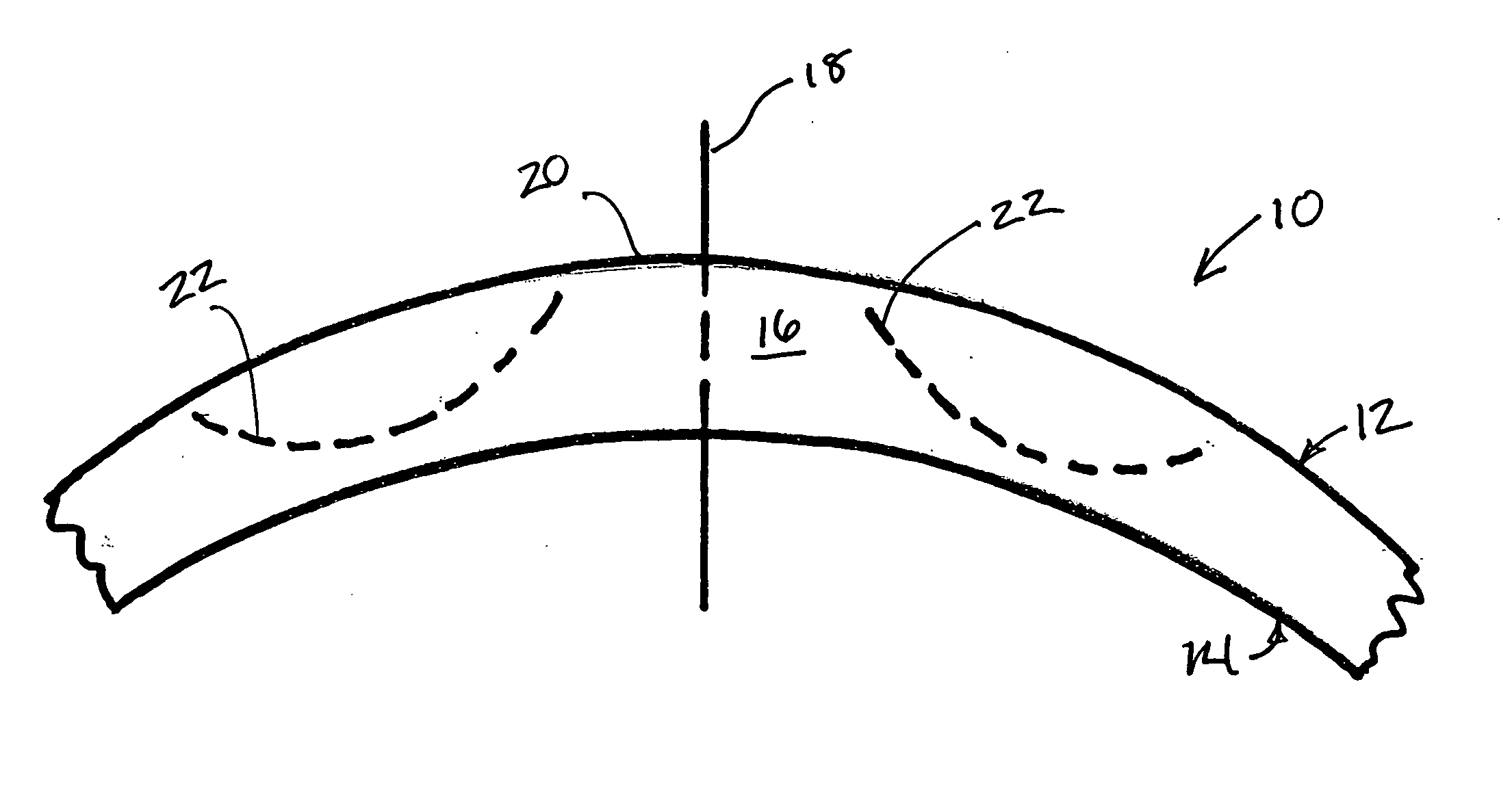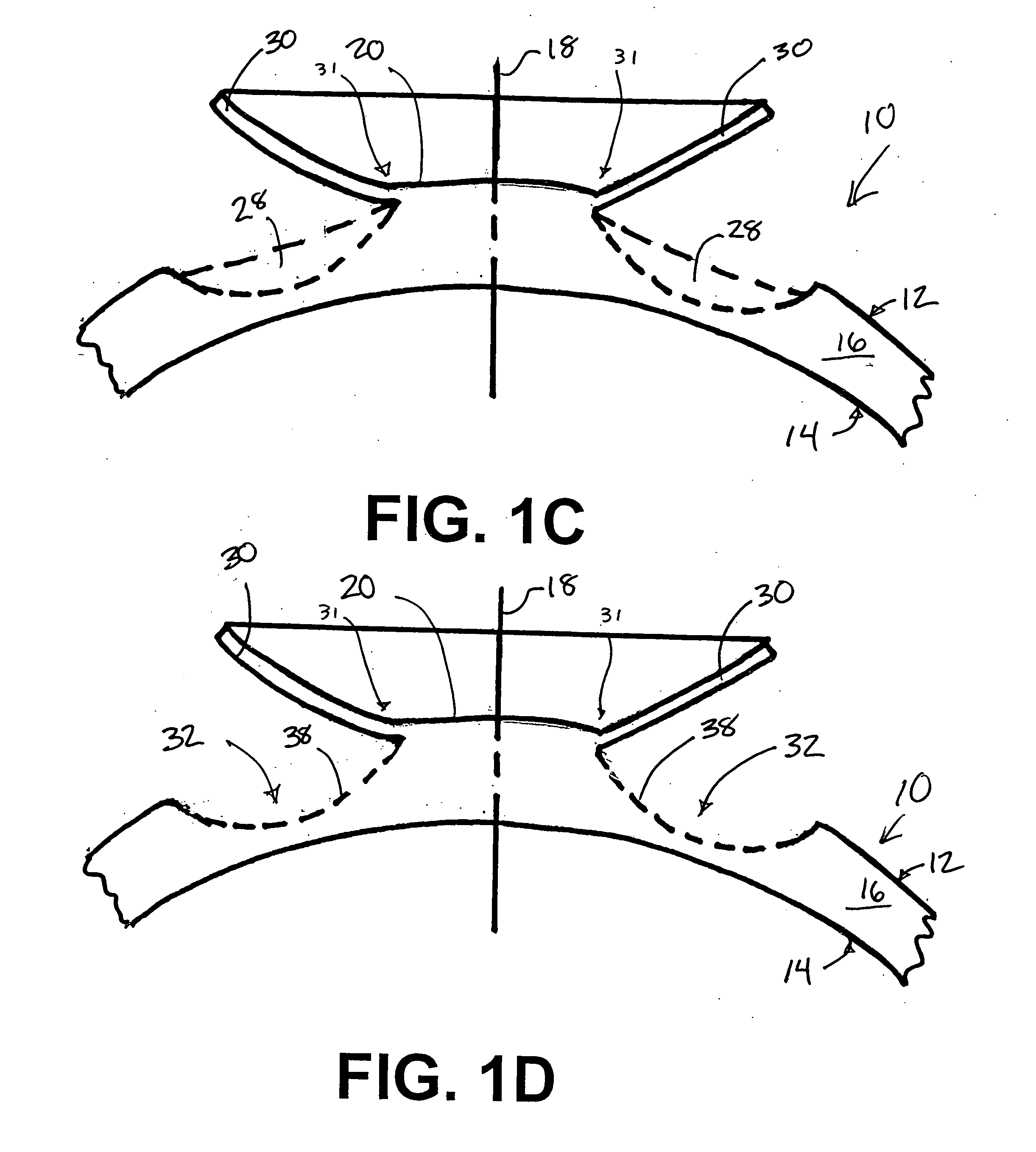Method for correcting hyperopia and presbyopia using a laser and an inlay outside the visual axis of eye
- Summary
- Abstract
- Description
- Claims
- Application Information
AI Technical Summary
Benefits of technology
Problems solved by technology
Method used
Image
Examples
first embodiment
[0042]FIGS. 1A-1I illustrate a method of correcting hyperopic or presbyopic errors in an eye according to the present invention. As seen in those figures, the cornea 10 has an epithelium 12 (the external, exposed layer of the cornea), an endothelium 14 (the internal layer of the cornea), and a stroma 16 located therebetween. The cornea 10 has a central visual or optical axis 18 which passes through the central area 20 of the cornea 10.
[0043] To correct for hyperopia or presbyopia, the refractive power of the cornea 10 must be increased. In the method of the present invention, this is accomplished by reshaping the cornea 10. As seen in FIG. 1A, a first curvilinear cut 22 is created in the stroma 16 using an ultra-short pulse laser, such as a femtosecond laser. The use of an ultra-short pulse laser is desirable because such a laser creates precise intrastromal cuts with little corneal trauma. A suitable ultra-short pulse laser is the IntraLase FS laser available from the IntraLase Cor...
embodiment
of FIG. 11
[0051]FIG. 11 illustrates a third embodiment of the present invention. In this embodiment, an ultra-short pulse laser makes a first cut 90 through the epithelium 92 of the cornea 94 to create a corneal flap 96. The laser is then used to soften a portion 98 of the cornea by selectively aiming and firing the laser at a portion of the stroma 100 located below the corneal flap 96. The corneal flap 96 can then be lifted, and the softened portion 98 of the stroma 100 can be removed using a spatula or any other suitable instrument. After the softened portion has been removed, the remainder of the treatment takes place as discussed above with respect to the first embodiment.
Embodiment of FIGS. 12-14
[0052]FIGS. 12-14 illustrate a fourth embodiment of the present invention. In this embodiment, a corneal flap 102 is formed and raised to form an exposed portion 106 of the stroma 104. A drill bit 108 is then used to remove a portion of the stroma 104. Once the desired amount of stroma...
PUM
 Login to View More
Login to View More Abstract
Description
Claims
Application Information
 Login to View More
Login to View More - R&D
- Intellectual Property
- Life Sciences
- Materials
- Tech Scout
- Unparalleled Data Quality
- Higher Quality Content
- 60% Fewer Hallucinations
Browse by: Latest US Patents, China's latest patents, Technical Efficacy Thesaurus, Application Domain, Technology Topic, Popular Technical Reports.
© 2025 PatSnap. All rights reserved.Legal|Privacy policy|Modern Slavery Act Transparency Statement|Sitemap|About US| Contact US: help@patsnap.com



